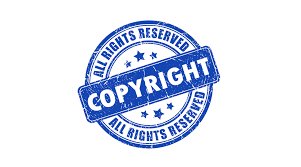HOW TO COPYRIGHT TO PROTECT DRAWINGS AND SKETCHES
There are many small businesses that are based on the creative ideas and works of their creators. For example, a self-employed designer or an architect might have use a portfolio of his drawings or sketches to get prospective clients and grow his business

There are many small businesses that are based on the creative ideas and works of their creators. For example, a self-employed designer or an architect might have use a portfolio of his drawings or sketches to get prospective clients and grow his business. Creative work like drawings or sketches, paintings and other works of fine art are a type of intellectual property that are protected by Indian copyright laws.The Copyright Laws in India is governed by the Copyright Act, 1957. Paintings, sketches, engravings and craftsmanship vary from artistic works. It may even encompasses architecture and photographs to a certain extent. An art must also be an original work to be protected under the copyright act, like other entities covered by copyright. The art is protected for the lifetime of the artist. The Berne Convention specifies that the predecessor's copyright can favour two generations of the artist. The copyright expires after a fixed period until the author of the art is dead, which varies from country to country.The artist is the first owner of the art he produces unless he is contractually bound for an employer, mainly newspapers magazine or studios.
SOME PRIVILEGES ENJOYED BY THE ARTISTS UNDER THE COPYRIGHT ACT
- Only the author has the right to reproduce and recreate the work in any manner or form he wishes to.
- If the work has nor been published yet, he is the only person who can or has the authority or right to publish it.
- Only the creator/artist has the right to give the permission to use the art in movies or films.
- Only they can make a further adaptation of the work.
There are only a few exceptions to the rule. For example, It is exempted from the act if the art is seen incidentally in a film. In few certain cases like these, where the art is placed at a particular place and that place gets filmed in a movie or show, the artist will not be able to claim copyright infringement. The Copyright Act in a few countries forbids auction houses from using copies of art to advertise for sale. The auction house must obtain the permission of the owner of the art before doing so. This provision is, however, widespread only in a select few nations. One may also authorise or support other artisans or a merchant against the normal payment of royalties to use his artistic work for commercial and other purposes. Also, for a nice price, one can sell his designs to third parties at an art gallery. The artist will eventually develop as his own boss along these lines and can allow his clients to use his work or to change his development according to his own terms and conditions
Artistic works capable of being registered under Designs Act 2000.
All Design is a drawing, but all drawing is not a design. For any work that qualifies as a Design pertaining to the meaning of Design read with section 2(d) of the Designs Act and is obviously capable of being registered under to Section 10 of the Designs Act but is subject to registration of copyright pursuant to the Artistic Category, registration shall be allowed only after the submission of an affidavit claiming that the work is not subject to registration or registration.
How can Copyright protect the uniqueness of creative art?
For an artist, copyright plays the role of a critical resource that is regarded as an intangible asset. As soon as you apply for the registration of your original artistic work under copyright, the same shall be checked by the copyright authority in order to verify the originality of the artistic work. Generally, for evaluation, it takes 3-4 months. The Copyright Authority shall, after the examination has been successfully completed, grant a certificate on behalf of the artist. This certificate provides a legal document and substantiated the fact that the applicant/artist has the sole right over that specific artistic work.
OTHER WAYS TO PROTECT THE ARTWORK FROM INFRINGEMENT
Downloads
In case the artist needs wants to upload their drawing online, There will be various ways so that they can make sure their images can not be easily downloaded, depending on what website creator they use for their online portfolio. Some website hosts, for example , allows to simply check a box, while others might require a plugin or your own coding to prevent downloads from right-clicking. Admittedly, there will be ways to get around any of these approaches, but when they hit this first hurdle, most people will definitely give up.
High-Quality Images
No body wants any blurry, grainy, low-quality photos that drag down their work in order to provide a strong online portfolio that stands out from the crowd. Low-resolution pictures are less likely to be stolen.
Signing under the Artwork
If the artist has signed their name under their drawings or sketches, the viewer gets to know it is protected and it is less likely to be copied.
Therefore, there are various ways to protect your artwork, but to ensure there is no infringement, a proper legal representative must be chosen who excels in the filed and can advise properly on the matters of copyright.
-RAKSHA SINGHAL












